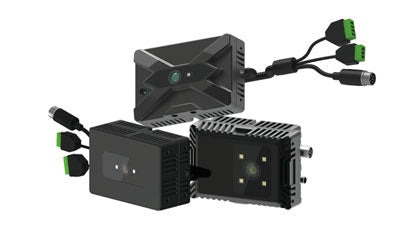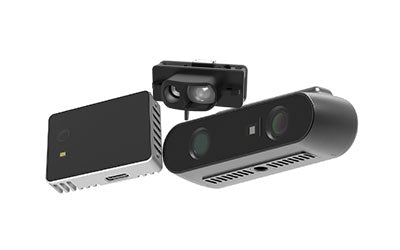ToF Tech & Semiconductor Chips: Powering Future Smart Applications
Semiconductor chips, as a core component of modern technological development, have penetrated various industries. Whether in consumer electronics, automobiles, communication, or in industrial automation and smart homes, the role of semiconductor chips is ubiquitous. With the gradual popularity of ToF (Time-of-Flight) technology, the application of semiconductor chips has been further expanded. ToF sensors, with their high-precision 3D sensing capabilities, bring innovative solutions to the semiconductor industry, driving the development of intelligent applications.
What is a chip in semiconductor?
In the semiconductor field, a chip typically refers to a miniaturized electronic component made from semiconductor materials such as silicon. It serves as a carrier for integrated circuits (ICs) and contains multiple electronic components (such as transistors, capacitors, resistors) and circuits, which are miniaturized and integrated on a single silicon wafer using specific processes.
The basic function of a semiconductor chip is to control the current and voltage to process, store, and convert information, as well as execute calculations and control tasks. It is widely used in various electronic products, including computers, smartphones, televisions, automobiles, medical devices, and home appliances. Depending on their function, semiconductor chips can be processor chips (like CPUs), memory chips, sensor chips, communication chips, etc.
The chip manufacturing process is complex, typically involving the following main steps:
-
Wafer Manufacturing: Starting from high-purity silicon materials, the wafer is made through cutting, grinding, and polishing.
-
Photolithography and Etching: Photolithography is used to create circuit patterns on the wafer surface, and these patterns are transferred to the wafer through etching techniques.
-
Doping and Metallization: Specific impurity elements are doped into the silicon wafer to alter its conductivity, and metallization processes are used to connect the circuits.
-
Packaging and Testing: The completed chip is cut and packaged into components suitable for installation and use, followed by performance testing.
With technological advancements, the chip manufacturing process has become increasingly refined, and the functions of chips are growing more powerful to meet the demands of modern electronic devices for high performance, miniaturization, and low power consumption.
The Role and Applications of Semiconductor Chips
What is a semiconductor chip?
A semiconductor chip is a small electronic component made from semiconductor materials like silicon or gallium nitride. By utilizing the unique properties of semiconductor materials, they can precisely control the current and voltage under various conditions. As the core part of an integrated circuit, semiconductor chips perform important tasks such as data processing, signal conversion, and storage control in modern electronic products.
Main Uses of Semiconductor Chips
Semiconductor chips have wide applications, covering fields such as:
-
Computing and Storage: Semiconductor chips are the core processing units in devices like computers and smartphones, used to process complex computing tasks, store, and retrieve data.
-
Sensors and Detectors: Used for environmental sensing, object recognition, motion detection, etc., such as temperature and humidity sensors, light sensors, etc.
-
Communication: Semiconductor chips are widely used in communication devices like smartphones, routers, etc., for signal processing and data transmission.
-
Smart Hardware: In modern technological products like smart homes and wearables, semiconductor chips handle sensor input, run smart algorithms, and control hardware devices.
With ongoing advancements in technology, semiconductor chips are not only used in traditional electronic products but are also being utilized for innovation in emerging fields. One key technology in this realm is ToF (Time-of-Flight) sensors, which rely on the time-of-flight principle to calculate the distance of objects and provide precise depth sensing. The development of this technology is closely tied to the support of semiconductor chips.
ToF Technology: Innovative Application of Semiconductor Chips
What is ToF Technology?
ToF (Time-of-Flight) technology is a distance measurement method based on optical principles. It emits infrared light pulses and measures the time it takes for the light pulse to reflect off an object and return, calculating the distance to that object. This technology is widely used in 3D imaging, depth sensing, environmental perception, and other fields, providing real-time, high-precision spatial information for various intelligent applications.
The Relationship Between Semiconductor Chips and ToF Sensors
ToF sensors leverage the powerful computing and processing capabilities of semiconductor chips to generate depth images. Specifically, after emitting light pulses, the semiconductor chip receives the reflected light, calculates its flight time, and generates depth data for each pixel. This process requires efficient and precise data processing to ensure the quick generation and real-time processing of depth images.
The Role of Semiconductor Chips in ToF Sensors:
-
High-Speed Data Processing: ToF sensors need extremely high data processing capabilities to generate 3D depth images in real-time, a task handled by semiconductor chips. By optimizing chip design, semiconductor chips can process large amounts of data in a very short time, ensuring the sensor operates efficiently.
-
Low Power Consumption and High Efficiency: ToF sensors are often used in portable devices, smartphones, drones, and other areas, which require the sensors to have low power consumption. The continuous optimization of semiconductor chips allows ToF sensors to reduce power consumption while maintaining performance, thereby extending the device's usage time.
-
High Precision Depth Perception: Semiconductor chips enable precise time-of-flight measurements, allowing ToF sensors to achieve millimeter-level depth sensing. This makes ToF sensors indispensable in high-precision applications such as autonomous driving, facial recognition, and robot navigation.
Applications of ToF Technology
ToF technology has been applied in various industries, especially in scenarios that require precise 3D sensing. With the advancement of semiconductor chip technology, the application scenarios of ToF sensors are expanding, mainly including the following areas:
-
Smartphones and Consumer Electronics: Modern smartphones are equipped with ToF sensors to enable facial recognition, virtual reality (VR)/augmented reality (AR) applications, automatic photo focusing, and other functions. Semiconductor chips provide the computational and processing power for these high-precision sensors, driving continuous innovation in smartphone technology.
-
Autonomous Driving and Unmanned Vehicle Technology: ToF sensors are used in autonomous driving systems for environmental perception, accurately measuring the distance and depth of objects to assist in path planning, obstacle detection, and other tasks. The high-performance processing capabilities of semiconductor chips enable ToF sensors to respond in real-time, ensuring driving safety.
-
Robotics and Industrial Automation: In robotics, ToF sensors help achieve precise navigation, obstacle avoidance, and object recognition. In industrial automation, ToF sensors provide accurate 3D data, optimizing production line efficiency and quality inspection.
-
Smart Homes and Security Monitoring: ToF sensors can be used in smart home environmental monitoring, such as smart locks, security cameras, and other devices. Through the real-time processing capabilities of semiconductor chips, ToF sensors can efficiently detect and recognize people and objects, ensuring safety in homes and public places.
-
Healthcare: In the medical field, ToF technology is used for medical imaging and patient monitoring, providing precise body depth information to help doctors with diagnosis and surgical planning. The computational power of semiconductor chips provides strong support for medical devices.
Future Trends of Semiconductor Chips and the Development of ToF Technology
With continuous technological advancements, both semiconductor chips and ToF technology will continue to develop rapidly and mutually promote each other. Here are some future trends:
1. Integration and Miniaturization
With advancements in semiconductor chip technology, ToF sensors will become more compact and integrated. Future ToF sensors will be embedded in more devices such as smartphones, smart glasses, and automobiles, driving these devices toward smarter development.
2. Higher Precision and Real-Time Capabilities
As computational power increases, ToF sensors will provide higher precision and support millisecond-level real-time data feedback. Especially in fields like autonomous driving and security monitoring, where real-time performance is critical, innovations in semiconductor chips will enable more efficient real-time processing.
3. Integration with AI and Data Analytics
With the ongoing development of AI technology, ToF sensors will combine with artificial intelligence algorithms to analyze and process the 3D data collected, enabling more complex application functions such as behavior recognition and anomaly detection.
4. Multimodal Sensor Fusion
In the future, semiconductor chips will increasingly integrate with other sensing technologies, such as radar and optical cameras, to form multimodal sensor systems, greatly improving the adaptability and accuracy of ToF sensors in complex environments.
Conclusion
The combination of semiconductor chips and ToF technology has brought unprecedented innovation and development opportunities to various industries. Whether in consumer electronics, autonomous driving, robotics, or in smart homes, security monitoring, and other fields, ToF technology will play an increasingly important role. As the core of this technology, semiconductor chips will continue to play an indispensable role in driving intelligent applications, optimizing device performance, and improving precision. With the continuous development of future technologies, ToF technology will become more widely used, propelling us into a smarter and more interconnected era.
Synexens 3D Of RGBD ToF Depth Sensor_CS30
Our professional technical team specializing in 3D camera ranging is ready to assist you at any time. Whether you encounter any issues with your TOF camera after purchase or need clarification on TOF technology, feel free to contact us anytime. We are committed to providing high-quality technical after-sales service and user experience, ensuring your peace of mind in both shopping and using our products.
-
Postado em
CS30



